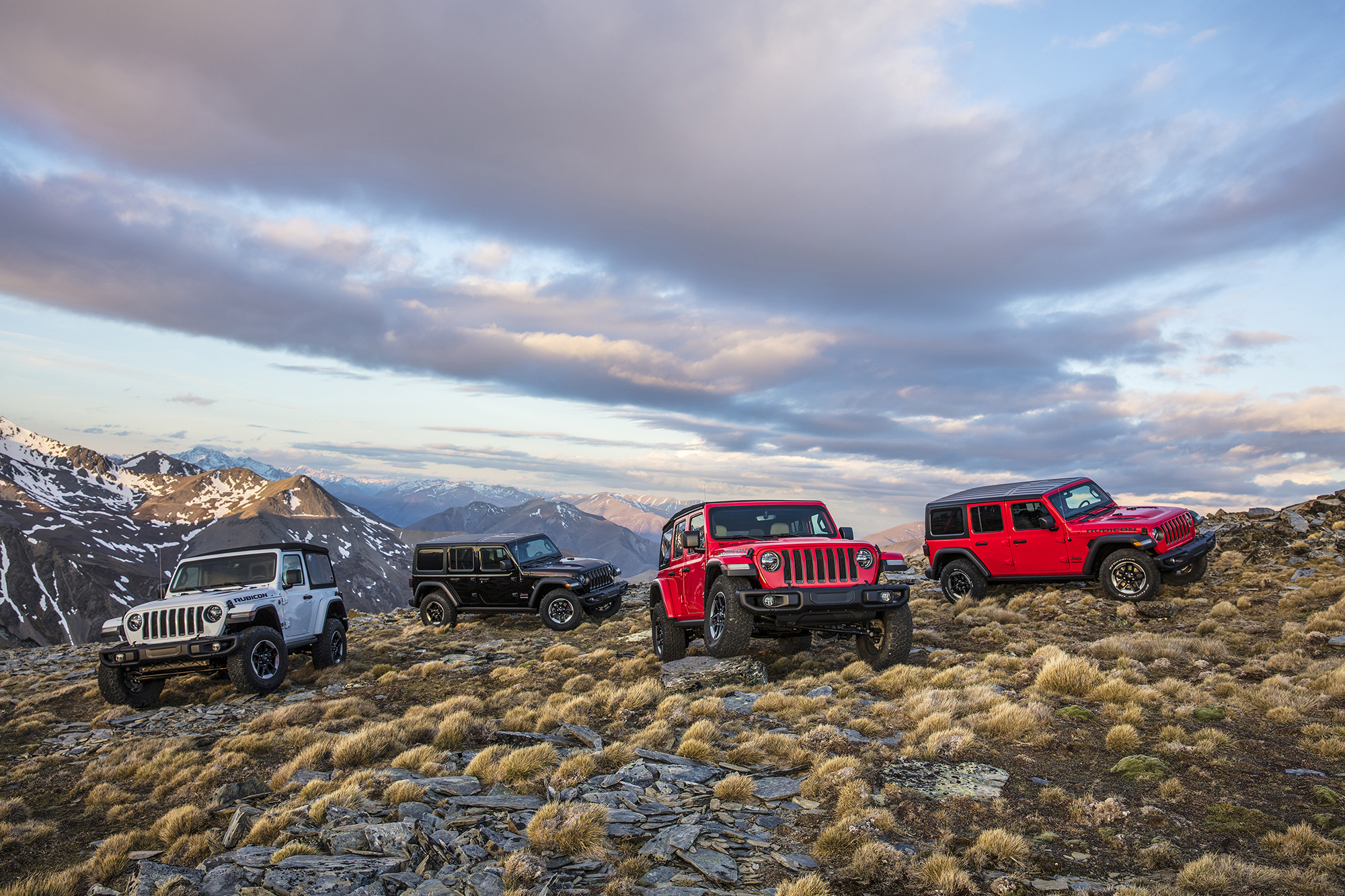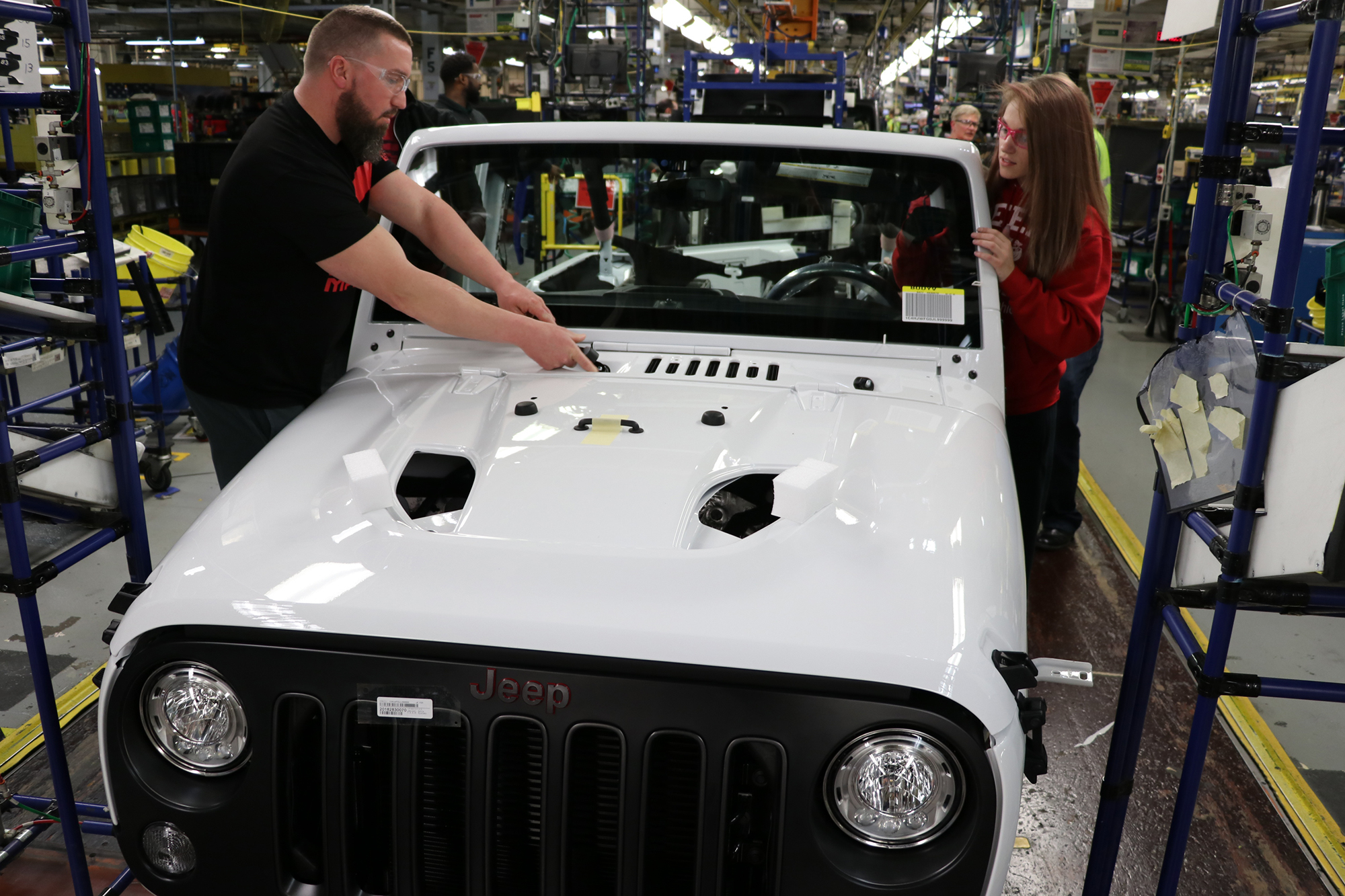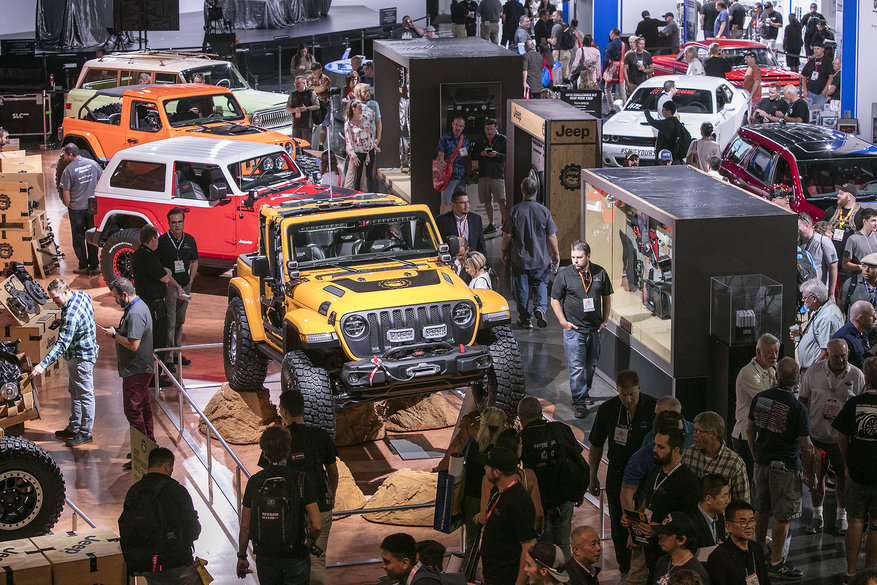Jeep, Electrification, Cost Savings All Loom Large In Potential Automotive Tie-Up
by Matt Konkle
Quadratec Channel Editor
On the one side is a lone dancer. You know the type. The man or woman gliding around alone to whatever music is playing, extending a hand every few steps to potential partners only to be rebuffed time after time.
And then, on the other side of the floor, is the angry couple. Arguing over something that you can’t quite hear, but their balled up fists and red faces pretty much tell the story. You may have even heard something about legal troubles.
The lone dancer sees a chance, saunters over and, once again, holds our a hand looking for that partner. Only this time there is no rebuke. No refusal. So perhaps that lone dancer has finally found a partner.
Fiat Chrysler Automobiles holds that role as the lone dancer. A part they played for years under former CEO Sergio Marchionne, while seeking out peer after peer for a merger. General Motors, Volkswagen and others all turned down the idea even though Marchionne strongly suggested that pooling resources in an ever more complex workspace only made sense.
Now, though, FCA has sought out France’s Groupe Renault as a merger partner. And Renault is listening closely—possibly because of increasing friction between itself and alliance partners Nissan and Mitsubishi, not to mention the legal troubles of former chairman Carlos Ghosn.
FCA last week officially submitted a $35-plus billion merger proposal to Renault, offering a 50/50 partnership that, if accepted, would create a new company and displace General Motors as the world’s third-largest automotive manufacturer. Should Nissan and Mitsubishi join Renault, this proposed merger could actually result in the world’s largest automobile company. It would also, FCA said in a statement, generate $5.6 billion in annual savings.
Renault is scheduled to vote on the proposal sometime this week, perhaps as early as Wednesday. Many industry experts believe the answer will be yes, although there are governmental issues to resolve with France and Italy. A yes by Renault would open the way for a non-binding memorandum of understanding to start exclusive merger negotiations.
”The proposed combination would create a global automaker, preeminent in terms of revenue, volumes, profitability and technology, benefitting the companies’ respective shareholders and stakeholders,” FCA said in a statement. “The combined business would sell approximately 8.7 million vehicles annually, would be a world leader in EV technologies, premium brands, SUVs, pickup trucks and light commercial vehicles and would have a broader and more balanced global presence than either company on a standalone basis.”

A merger would align all of FCA's brands under a common umbrella with Renault Group's Renault, Dacia and Lada models. However, the real prize enticing Renault towards a merger are FCA powerhouses Jeep and Ram, as Renault has almost no presence in the profitable North American truck and SUV marketplace.
Ram has always been a steady performer for FCA, and is once again up in sales over 2018. For Jeep, even though the brand has been down a bit lately in month-over-month sales, it is still the top sales producer for FCA and accounts for nearly 42 percent of the automaker’s overall vehicle sales total.
Jeep has also been very active in its space, having just released its first truck since 1992 as well as an all-new Wrangler last year. The brand has even more vehicle plans in the pipeline—including resurrecting the Wagoneer and Grand Wagoneer nameplates.
So, for Renault, merging under one roof and having access to these profitable brands would certainly make sense. Especially as it appears the current SUV/truck push shows no signs of diminishing any time soon.
For FCA, this merger is almost a reverse from what Renault would gain. That’s because FCA’s European performance has been subpar compared to its North American presence. And Renault performs much better on the continent—behind only Volkswagen—and currently dwarfs anything Fiat puts out. Plus, gaining a stronger European foothold for Jeep and Ram would only add to the benefit.
“Jeep and Ram have great potential globally but they haven’t had the means to do it,” said Michelle Krebs, senior analyst at AutoTrader, to the New York Times. “There is strong potential if done right. Jeep is known globally.”
However, the bigger deal for FCA is the jump it would receive in electrification research and application. Renault is far ahead of where FCA currently stands in bringing electrification to vehicle platforms.
Why is this important to FCA? Well, under new CEO Mike Manley, FCA has pledged to seriously expand its hybrids, plug-in hybrids and pure electric vehicles over the coming years. In March, Manley said FCA would develop opportunities in the North American market “including at least four plug-in hybrid vehicles and the flexibility to produce fully battery-electric vehicles.”
For Jeep enthusiasts, the automaker already has a mild-hybrid Wrangler on the market in its 2.0L eTorque power plant, but has stated it will soon offer an all-electric Wrangler—perhaps in the 2020 model year. If that sells well, then perhaps an all-electric Gladiator truck is on the horizon. So gaining access to Renault’s research should help drive down research and development costs on electrification, as well as move the needle on autonomous driving opportunities.
But the question of a merger isn’t as simple as Renault just saying ‘yes’ to the offer. While a deal could prove something that helps reshape the automotive industry as we know it, especially with electrification and autonomous driving, both the French and Italian governments could hold up progress if they aren’t happy with terms.

Both are worried about job losses and possible plant closures, especially when merger terms indicate a nearly $6 billion potential savings, however FCA has done its best to convince both Renault, and everyone else, that those savings come with jobs and plants still intact.
In a statement, FCA did say there would be no factories closed as a result of a marriage. And CEO Mike Manley sent a letter to employees stating the projected cost cuts and savings "are not predicated on plant closures but instead on the ability of the combined company to invest capital more efficiently."
The company also said 90% of savings would come from reducing spending on purchasing parts, and combining research and development, manufacturing and tooling. It estimates the savings would be achieved in six years.
Some experts aren't so sure, though, including David Bailey, academic economist at Britain's University of Birmingham.
“Potentially, there is a good fit and a lot of synergies, but it would be natural to be skeptical that big mergers like this have failed in the past,” he said to Autocar. "“Achieving five billion in savings without significant plant closures may be difficult.”
The French government, which actually owns 15% of Renault, has held talks with Renault and FCA in recent days, and a government official said that the "dynamic is positive" and the merger "makes sense”, according to The Associated Press.
Italian Deputy Premier Luigi Di Maio is also closely following the potential merger, and said in a Facebook message Monday that a merger would bring "a significant added value to Italy" and he "sees our country as one of the protagonists (in a deal)."
And then there are the alliance partners of Renault—Nissan and Mitsubishi. Should they join in with this process, the combined strength of all would create the biggest automaker in the world, by far. Neither, though, was consulted about a merger, nor did FCA specifically target either in the merger terms.
FCA did say in a statement that it was motivated by “the need to take bold decisions to capture at scale the opportunities created by the transformation of the auto industry in areas like connectivity, electrification and autonomous driving.”
Plus, FCA Chairman John Elkann specifically praised Nissan and Mitsubishi in comments to Japan’s Nikkei newspaper.
"Our proposed merger with Renault will create the potential to build a global partnership with all three of these great companies during this period of unprecedented transformation in our industry," Elkann said. “I have huge respect for Nissan and Mitsubishi, and their products and businesses. Our spirit is one of finding a common purpose that provides benefits for all our companies, embracing Nissan and Mitsubishi as valued and respected partners."
”Our proposal to Renault is one we believe will be transformative in many positive ways."
Of course, should this go through, it wouldn't be the first time Jeep and Renault have crossed paths. The latter struck a deal with AMC (American Motors Corporation) back in 1979, paying $150 million for a 22.5 percent interest in AMC—the parent of Jeep at the time. That stake eventually grew to 49 percent a year later as a continually weak economy, high fuel prices and bad product mix caused AMC to hemorrhage cash. So, instead of filing bankruptcy, AMC again turned to Renault for a $90 million cash infusion.
However, the relationship between Jeep and Renault executives was not the best during this time as more energy was spent on trying to introduce French-built cars into an American marketplace. Jeep was considered a niche brand and its production facilities, as well as employees, were treated as such even though a large part of AMC's profits came from Jeep vehicles. Despite the poor working conditions, there were some successes during this time, notably the Jeep Cherokee and Wagoneer rollout. Both of these popular products would come to define a new segment in the automotive industry—the sport utility vehicle—and Cherokee would continue production through 2001. Wrangler also came into focus during this time, and was unleashed right at the end of Renault's reign.
Renault remained as the main shareholder of AMC until it, too, fell into financial difficulty in the mid 1980s. It ended up selling its share of AMC to Chrysler in 1987, as Chrysler specifically coveted the Jeep brand.
Now it could be Renault coveting that brand as it looks to re-enter the North American market.
The dance goes on.





















